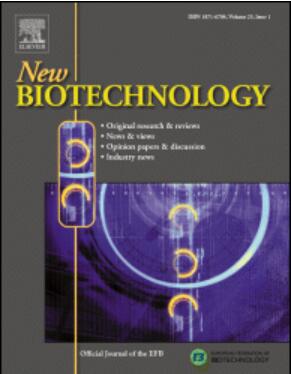按需胰岛素制造使用无细胞系统与“柱上”转换方法。
IF 4.9
2区 生物学
Q1 BIOCHEMICAL RESEARCH METHODS
引用次数: 0
摘要
最近的研究表明,糖尿病的患病率预计将显著增加,并导致对胰岛素供应链的需求不断上升。尽管胰岛素是第一个获得FDA批准的重组治疗药物,但对全球许多人来说,获得胰岛素仍然具有挑战性。在这里,我们报告了利用无细胞蛋白合成(CFPS)系统在不到一天的时间内快速生产成熟desb30 -胰岛素的进展。这是朝着分散胰岛素生产和使生产更接近护理点的方向取得的重大进展,从而改善了糖尿病患者的可及性。为此,纯化的无细胞提取物PUREfrex®2.1用于合成标记的胰岛素原结构,该结构可以通过柱上亲和层析工艺捕获并转化为成熟的胰岛素。值得注意的是,两种伴侣蛋白,肽基脯氨酸异构酶(FkpA)和7千顿蛋白(Skp)在胰岛素原的无细胞表达中起关键作用。然后将胰岛素原固定在Ni-NTA柱上,依次纯化和转化无细胞产物,得到desb30 -胰岛素。经过进一步优化,与现有方法相比,该方法具有时间和资源效率。本文报道的无细胞表达和柱上转换方法同时应用,可以实现胰岛素的快速按需制造,以提高胰岛素的可及性,防止未来短缺。本文章由计算机程序翻译,如有差异,请以英文原文为准。
On-demand insulin manufacturing using cell-free systems with an "on-column" conversion approach
Recent studies project that the prevalence of diabetes is expected to increase significantly and lead to escalating demand on the insulin supply chain. Despite being the first recombinant therapeutic approved by the FDA, insulin remains challenging to access for many around the globe. Here we report on advancements in manufacturing insulin using cell-free protein synthesis (CFPS) systems to rapidly produce mature desB30-insulin in less than a day. This is a major advance towards decentralizing insulin manufacturing and bringing production closer to the point-of-care, thereby improving diabetic patient accessibility. To this end, a purified cell-free extract, PUREfrex® 2.1, was utilized to synthesize a tagged proinsulin construct that can be captured and converted into mature insulin using an on-column affinity chromatography process. Notably, two chaperones, peptidyl prolyl isomerase (FkpA), and seven kilodalton protein (Skp) were observed to play a critical role during cell-free expression of proinsulin. The proinsulin was then immobilized on a Ni-NTA column where the purification and conversion of cell-free products were performed sequentially to yield desB30-insulin. Following further optimization, this method serves as a time and resource-efficient production process as compared to current methods. When applied simultaneously, the cell-free expression and on-column conversion methods reported here can be adopted to enable rapid on-demand insulin manufacturing in order to improve the accessibility of insulin and prevent future shortages.
求助全文
通过发布文献求助,成功后即可免费获取论文全文。
去求助
来源期刊

New biotechnology
生物-生化研究方法
CiteScore
11.40
自引率
1.90%
发文量
77
审稿时长
1 months
期刊介绍:
New Biotechnology is the official journal of the European Federation of Biotechnology (EFB) and is published bimonthly. It covers both the science of biotechnology and its surrounding political, business and financial milieu. The journal publishes peer-reviewed basic research papers, authoritative reviews, feature articles and opinions in all areas of biotechnology. It reflects the full diversity of current biotechnology science, particularly those advances in research and practice that open opportunities for exploitation of knowledge, commercially or otherwise, together with news, discussion and comment on broader issues of general interest and concern. The outlook is fully international.
The scope of the journal includes the research, industrial and commercial aspects of biotechnology, in areas such as: Healthcare and Pharmaceuticals; Food and Agriculture; Biofuels; Genetic Engineering and Molecular Biology; Genomics and Synthetic Biology; Nanotechnology; Environment and Biodiversity; Biocatalysis; Bioremediation; Process engineering.
 求助内容:
求助内容: 应助结果提醒方式:
应助结果提醒方式:


